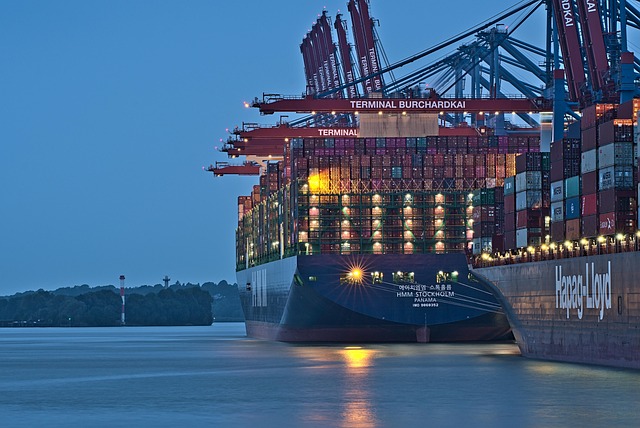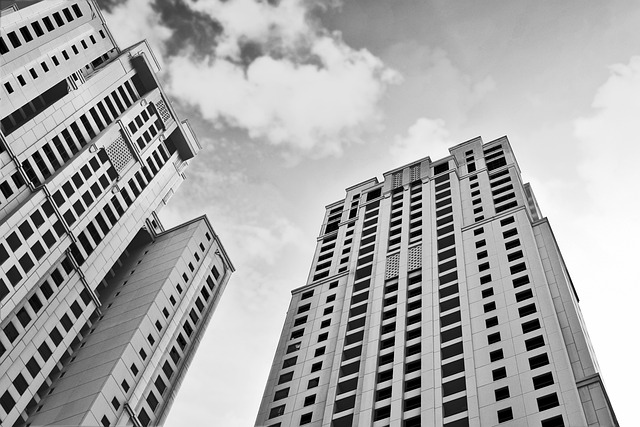Commercial re-roofing demands specialized knowledge for heavier loads, foot traffic, and harsh weather conditions. Assess structural integrity before choosing between complete removal, overlay roofs (metal, modified bitumen), or reroofing flat roofs. Strategic planning involves cost analysis, considering material, labor, and preparation expenses. Hire expert professionals for high-quality installations, especially for flat or overlay roofs, to ensure durability and long-term savings in commercial properties.
When a commercial property requires a new roofing system, thorough planning and expert knowledge are essential. This comprehensive guide delves into the key considerations for successful commercial re-roofing. From understanding unique structural needs and selecting durable materials to efficient planning and cost analysis, each step ensures a safe, long-lasting, and minimally disruptive process. Discover how skilled professionals can transform your roof, safeguarding your investment and enhancing your property’s longevity.
- Understanding Commercial Roof Replacement Needs
- Assessing Structural Integrity for Safe Re-roofing
- Choosing Durable Materials for Longevity
- Efficient Planning for Minimal Business Disruption
- Cost Analysis: Budgeting for Commercial Re-roofing
- Hiring Experts: Ensuring Quality Installation
Understanding Commercial Roof Replacement Needs

When it comes to commercial properties, understanding the unique needs of roof replacement is paramount. Unlike residential roofs, commercial roofing systems often face more demanding conditions, including heavier loads, frequent foot traffic, and exposure to harsh weather patterns over extended periods. These factors contribute to wear and tear, making regular inspections crucial.
Commercial re-roofing involves careful consideration of the existing structure, local building codes, and the specific requirements of the property’s new roofing system. Whether it’s a complete removal and replacement or an overlay roof (adding a second roof layer over the old one) or reroof flat roof, each method has its advantages. The goal is to provide durable, long-lasting protection that stands up to the challenges posed by commercial settings, ensuring the building’s structural integrity and minimizing downtime for business operations.
Assessing Structural Integrity for Safe Re-roofing

Before initiating any commercial re-roofing project, a thorough assessment of the structural integrity is imperative for ensuring safety and longevity of the new roofing system. This initial step involves meticulous inspection of the existing roof structure, identifying potential weaknesses or damage that could compromise the stability during the re-roofing process. The goal is to verify if the old roof can support the additional weight of a new layer, whether it’s an overlay roof or a complete reroof of a flat roof.
Professional roofers employ advanced techniques and tools to evaluate factors like structural framing, fastening systems, and underlayment conditions. They pay close attention to the second roof layer (if applicable), checking for signs of wear, rot, or corrosion that might require repairs or replacements. This meticulous assessment is crucial in determining the feasibility of a re-roofing project, minimizing risks, and guaranteeing a safe, secure, and durable new roofing system for commercial properties.
Choosing Durable Materials for Longevity

When it comes to commercial re-roofing, selecting durable materials is paramount for ensuring a long-lasting solution. Business owners often turn to robust options like metal or modified bitumen to create an overlay roof, providing an effective barrier against the elements. These materials offer superior resistance to wear and tear, making them ideal for heavy commercial structures that require a reliable reroof flat roof system.
A well-chosen second roof layer not only shields the building’s interior but also prevents leaks, a common issue with old or damaged roofs. By investing in high-quality materials, businesses can avoid costly repairs down the line and maintain a safe, secure space for their operations. This proactive approach to commercial roofing ensures that structures remain vibrant assets for years to come.
Efficient Planning for Minimal Business Disruption
When it comes to commercial re-roofing, efficient planning is key to minimizing disruption to your business operations. The first step is assessing the current roofing system and understanding its condition. This includes checking for signs of damage, leaks, or structural weaknesses that might require immediate attention before initiating the reroof process. By doing so, you can avoid unexpected delays and costly repairs during the later stages.
A strategic approach involves considering an overlay roof as a potential solution. An overlay roof acts as a second roof layer, providing an effective and efficient way to repair and reinforce existing flat roofs without the need for complete replacement. This method is particularly beneficial for businesses aiming to maintain uninterrupted operations throughout the re-roofing process. Efficient planning also includes coordinating with reputable roofing contractors who specialize in commercial work, ensuring they have the expertise and resources to handle large-scale projects while minimizing disruption to your day-to-day activities.
Cost Analysis: Budgeting for Commercial Re-roofing

When considering commercial re-roofing, a thorough cost analysis is essential to ensure a successful project within budget. Property owners or managers must factor in the expense of materials, labor, and any necessary preparation or demolition work. It’s crucial to obtain detailed estimates from reputable roofing contractors who specialize in commercial work. These professionals can help navigate the various options available for commercial re-roofing, including overlay roof systems, reroofing flat roofs, or adding a second roof layer.
The complexity of the project and the condition of the existing roof significantly impact the overall cost. For instance, if an overlay roof is chosen, the price per square foot might be lower than a complete tear-off and replacement, but it requires careful assessment to ensure structural integrity. Alternatively, reroofing a flat roof with a new membrane or adding a second layer can extend the life of the current system, potentially saving costs in the short term. Proper budgeting involves considering both immediate expenses and long-term savings, ensuring the commercial property is protected while adhering to financial constraints.
Hiring Experts: Ensuring Quality Installation

When considering a commercial re-roofing project, hiring experts in the field is paramount to ensure quality installation. These professionals bring a wealth of knowledge and experience, crucial for navigating the complexities of reroofing flat roofs or applying an overlay roof as a second layer. Their expertise guarantees that every aspect of the process—from material selection to intricate craftsmanship—meets the highest standards.
A reliable roofing team will assess the existing structure, taking into account factors like age, condition, and load-bearing capacity. They’ll then recommend the most suitable re-roofing solution, whether it’s a complete replacement or an innovative overlay that extends the life of the current roof. This meticulous approach ensures not just a durable new exterior but also long-term cost savings for commercial property owners.
